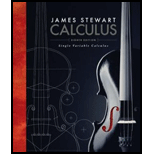
Since raindrops grow as they fall, their surface area increases and therefore the resistance to their falling increases. A raindrop has an initial downward velocity of 10 m/s and its downward acceleration is
If the raindrop is initially 500 m above the ground, how long does it take to fall?
Trending nowThis is a popular solution!

Chapter 3 Solutions
Single Variable Calculus
Additional Math Textbook Solutions
Calculus: Early Transcendentals (3rd Edition)
Calculus, Single Variable: Early Transcendentals (3rd Edition)
Calculus: Early Transcendentals (2nd Edition)
University Calculus: Early Transcendentals, Single Variable (3rd Edition)
Calculus & Its Applications (14th Edition)
- Algebra & Trigonometry with Analytic GeometryAlgebraISBN:9781133382119Author:SwokowskiPublisher:Cengage
 Trigonometry (MindTap Course List)TrigonometryISBN:9781337278461Author:Ron LarsonPublisher:Cengage Learning
Trigonometry (MindTap Course List)TrigonometryISBN:9781337278461Author:Ron LarsonPublisher:Cengage Learning


